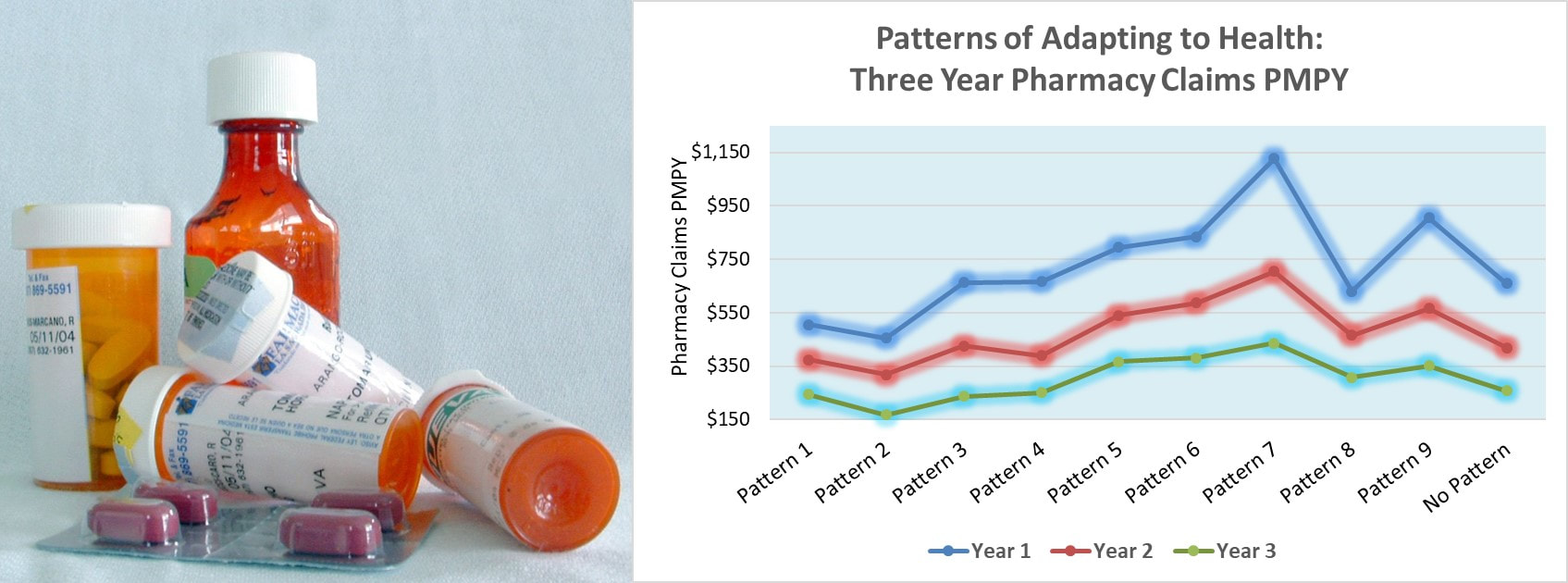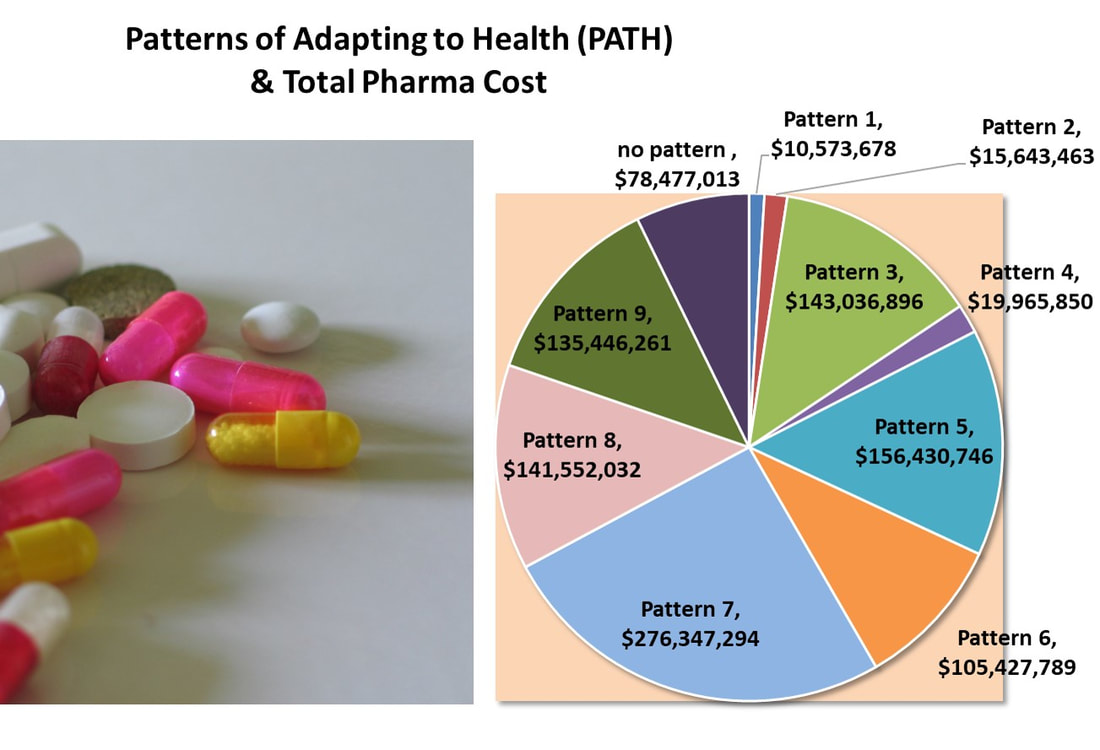Behavior drives health
|
Behavior, the things we do on a daily basis, weekly, and monthly basis, play the greatest role in health and premature death.
This is why the Patterns of Adapting to Health (PATH) are relevant and at the forefront of a new understanding of the relationship between the behavior of individuals and the health of populations. |
New opportunities
The Patterns of Adapting to Health (PATH) reveal new opportunities for:
- improving return on health care consumer marketing and advertising
- improving return on quantitative and qualitative consumer marketing research
- improving patient experience outcomes
- improving community health by directly targeting the behavioral patterns,
- leveraging demand and impacting medical expenditures flowing from or into your organization.
The Patterns of Adapting to health (PATH)
The nine Patterns of Adapting to Health (PATH) shape the health behavior of adults within the U.S. The Patterns of Adapting to Health (PATH) lead some adults to optimal health and relative freedom from illness, but lead others to poor health status, risk of physical and mental health disorders, and high medical expenditures.
The PATH and Employee Medical costs
The Patterns of Adapting to Health (PATH). In a sample of nearly 1,000 health plan employees, the employee's dominant PATH accounted for over $4,000 of difference in annual allowed medical claims.
The path and Type 2 Diabetes medical Expenditures

Patterns of Adapting to Health and Type 2 Diabetic Medical Costs. In a sample of over 1,200 Type 2 diabetics referred to disease management, the dominant "patterns of adapting to health" of diabetics was associated with over a $1,000 of difference in average medical claims per member per month.
The path and prescription claims
Patterns of Adapting to Health and Pharmacy Demand. In a sample of over 8,000 commercial health plan members, pharmacy demand over three years declined, but members with Pattern 7 consistently showed the highest demand for pharmacy while members with Patterns 1, 2, 8, and “no pattern” consistently showed the lowest. This demonstrated that the “pattern of adapting to health” of members effects demand across multiple years.
tHE path, PERCEIVED HEALTH STATUS, AND TYPE 2 DIABETES
Patterns of Adapting to Health (PATH) Impacts on Perceived Health Status. In a sample of over 4,000 commercial health plan members, the “patterns of adapting to health” had the same impacts on perceived health status among Type 2 diabetes as among non-diabetic members. While having Type 2 diabetes lowered perceived health status overall, the impact of the “patterns of adapting to health” on perceived health status remained the same whether suppressed by a diabetes diagnosis or not.
The PATH and employee outpatient claims

Patterns of Adapting to Health (PATH) and Outpatient Claims. Annual allowed outpatient medical claims of 900+ health plan employees varied by as much as $900 per employee per year based on their dominant “pattern of adapting to health”.
The PATH and Pharmacy Demand and medical expenditures
The Patterns of Adapting to Health (PATH) and Pharma Demand. In a sample of over 30,000 commercial health plan members, an actuarial analysis of pharma demand over 1.1 million member months identified one "pattern of adapting to health", Pattern 7, that accounted for a quarter of pharma medical expenditures. .
Patterns of adapting to health and risk odds of Type 2 diabetes
The Patterns of Adapting to Health (PATH) and Risk of Type 2 Diabetes. In sample of over 4,000 health plan members, two “patterns of adapting to health”, Pattern 4 and Pattern 7, had three times of the risk of Type 2 diabetes after controlling for self-reported health status. Results suggest addressing individual behavioral drivers of Type 2 diabetes may be not be enough to counter the effects of population-level patterns of behavior on Type 2 diabetes rates.
Health Care Seeking In Response to Perceived Illness or injury
Goal-Directed Health information Seeking
Patterns of Adapting to Health (PATH) and Goal-Directed Health Information Seeking. In a national sample of nearly 2,000 adults, a person’s “pattern of adapting to health” predicted differences in health information seeking based on different motivational goals. The PATH showed that levels of health information seeking are more consistent when motivated by a health issue compared to the goal of being "as healthy as possible". The PATH underlying population health behavior identify disparities in the motivation to be "healthy".








